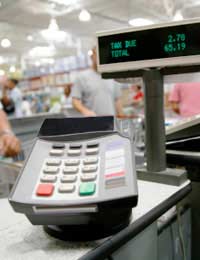Food Costs and Good Meal Planning

For a restaurant to be successful, you need to put time into your menu planning.
Good meal planning is far more than simply deciding what food you are going to serve to your customers. It is about pitching your meal costs at the right end of the budget of your prospective clients and then creating the right meals.
If you are the chef, think about what you want to cook and what skills you have. The type of food you serve will play a major part in the success of your restaurant and will be an integral part of your initial planning.
Added Value Menu Items
Some types of food and cuisine are high ‘value added’ products. Take pizza and pasta for example, standard menu items on restaurants up and down the country. If you actually look at the cost of making them – even with the very best, freshest ingredients – in comparison with what an average Italian restaurant will charge and you will see that they are very profitable items.The pizza or pasta dough will consist of flour, eggs and olive oil – perhaps a little salt. These all cost pennies. Top them with a lovely homemade tomato sauce – some fresh, ripe tomatoes, a few herbs, more olive oil – again, low cost items easily available. Top them with items such as mozzarella, salami, mushrooms, even expensive items like prawns and scallops. A decent sized pizza will cost around £1 to make and can be sold in your restaurant for at least £7. Even taking into consideration staff costs and overheads, that is a decent profit.
Meal planning is a key factor in the financial success of your restaurant. There is no point serving, say, roast beef and all the trimmings one day and then simply throwing away what you don’t sell. Nor do you want to put ‘Left Over Roast Beef and All the Trimmings’ on your menu the next day and expect it to draw in the crowds.
Think about having a cottage pie on the menu the next day, or a really great curry, with pilau rice and fluffy naan breads. The trick is to plan for the left overs and make something that looks totally new. Customers do not want to think they are being served leftovers, quite rightly so.
Portion Control
Another element to good meal planning is to get your portion control organisation. It makes good business sense to not make more that you will need and to not buy in stocks of expensive fresh ingredients unless you know you are going to sell them.Seafood is a case in point. People, especially women, love to order seafood on a night out. But nobody wants to be served frozen seafood – it must be fresh or customers will not return. So there is no point ordering thirty portions of king prawns on a normal Tuesday from your fish supplier as you will not sell them. Perhaps it would be a good idea if it was Valentines Day.
Keep Records
This leads us onto keeping detailed records. The best way to be savvy about food costs and meal planning is to know your restaurant and your customer’s eating habits inside out. This is rather tricky with a new restaurant, but there are general rules that are worth bearing in mind. They may seem rather basic, but avoid them at your peril!Women love shellfish and seafood.
Men love steak.
Women are more likely to order a dessert if they are with their friends.
Good waiting staff can influence your customer’s choice.
- Affordable Ways to Make Your Festive Menu Appealing
- Appealing to Off Peak Customers
- Appealing to Business Customers
- Understanding Restaurant Trends
- Reassessing Your Menu
- Child-friendly Restaurant Food
- Negotiate Prices with Suppliers
- Decide Which Food to Specialise in
- Developing a Set Menu
- Developing a Signature Dish


Re: Why Do You Want to Open a Restaurant?
If you had NOTHING to do what would me you coming with an Idea of opening a restauront
Re: Why Do You Want to Open a Restaurant?
Hello. I would like to open tea rooms in Coventry. What are my first steps? where to start??
Re: Get Funding for Your Restaurant
Hi, I would like some information about funding of a restaurant that sells Smoke BBQ Food.
Re: Why Do You Want to Open a Restaurant?
Hi, looking for pizza to open. New here, need some advices how it is organized here. Any tips advice or consultaion…
Re: The Rules for Staff Tips and Gratuities
I know this is an old thread but there's not much guidance for this in the uk. In the US it is illegal for bosses to…
Re: Get your New Restaurant Noticed
Totally agree about spending money where money is needed to be spent, there is nothing worse than cutting corners. You can…
Re: Is There a Right Time to Open a Restaurant?
@Paul - I have included the North Somerset Council funding and grants link here. I hope this helps.
Re: Is There a Right Time to Open a Restaurant?
Hi there I'm looking to start a restaurant I'm a chef of 18 years Ive been working on a business plan for…
Re: Get Funding for Your Restaurant
Hi I would like to get information about the funding of a restaurant that sells African meals.
Re: Designing Your Restaurant
I am at college studying catering and hospitality and im want to open my own resturant, but I dont know what to start with?